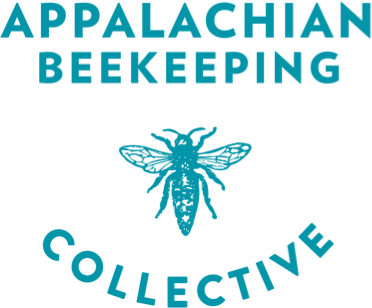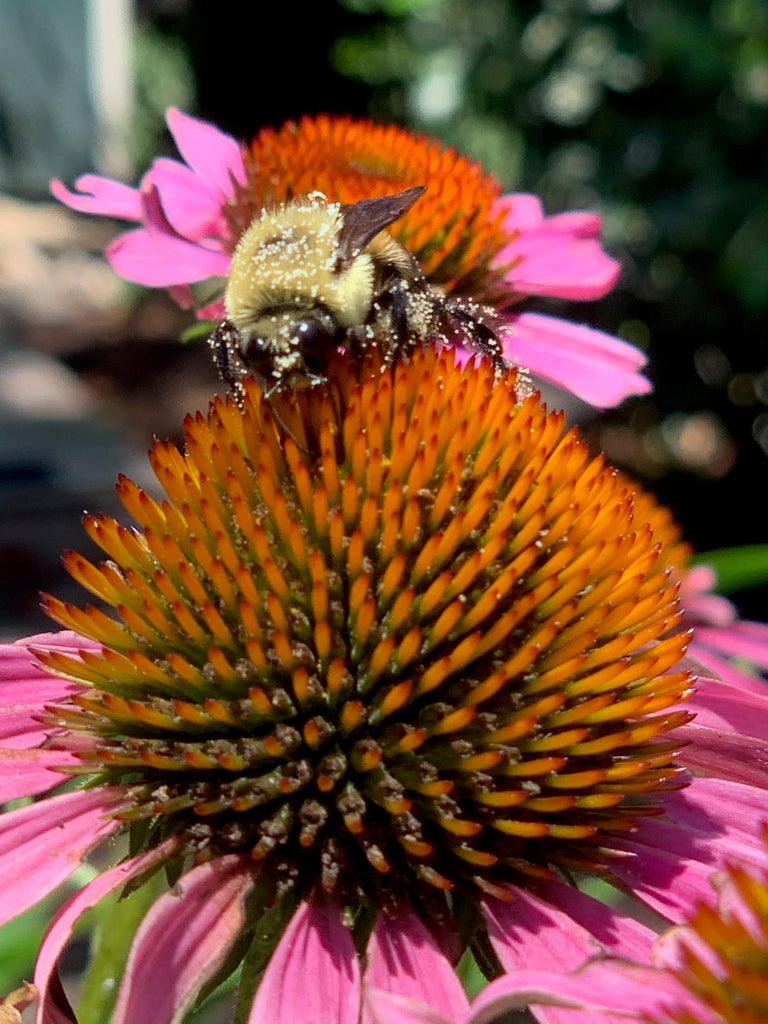By Morgan Franke, Appalachian Headwaters' Director of Native Plants
If you’re as excited about spring as I am, you may have already been digging around and getting your garden prepped for the coming growing season. But before you do too much else in a native plant garden, here are just a few reminders to help your native plants and pollinators have as successful as a year as possible.
- Avoid cleaning up your garden too soon
I know this is a hard one for most people, but as much as you are able, leave your gardens alone until the day time temperature is consistently about 50F. That way, any insects like native mason bees who are living in the stems of your plants, or butterflies, lady bugs, and damsel bugs that hunker down under debris in the bed during the winter, won’t be disturbed and can emerge naturally with the weather!
The same goes for mulching! Hold off on mulching until later in the spring when the soil dries out a little and the weather warms. Covering the ground with a layer of mulch too early could block the emergence of lots of beneficial pollinator insects, like the hummingbird clearwing moth and many native bees. Alternatively, you can just leave the leaves in your garden bed as the primary mulch, and many, many insects will take use of that habitat throughout the year.
- Observe and Plan
Before adding in any new native plants, you’ll want to know and have observed the site and garden bed where you’ll be adding them. First, make an assessment of the environmental conditions of your garden, or where you’d like to put your garden. Is it shady or sunny? Good drainage or more waterlogged? Those are some of the most important questions for native plants and key to their success. If you put shade loving plants in a full sun area, they most likely won’t survive, and vice versa.
If you have time before putting in a garden or adding more plants, it can be helpful to visit some natural areas or landscapes to see the associations between specific plant communities. Just remember, planning and planting a native garden doesn’t have to be all at once Especially depending on budget and time, it can easily be done in phases over the years.
- Soil reparation
If you have time, one of the easier methods for creating a new garden is making a sheet mulching, aka lasagna composting. This is simply layering browns and greens on a bed of cardboard in the fall, and there’s no digging or tilling involved. You can find more info about this process through google or taking a look at the following link: https://www.ecobeneficial.com/great_resources/lasagna-gardening/
If you are in more of a hurry and would like to make a bed this year in an area of lawn, you can also just dig up the grass or rent or hire someone with a sod cutter. Then you can plant directly into the new bed. Once you plant, be sure to mulch to help suppress weeds and conserve moisture.
- Plant Selection
Again, you’ll want to pick plants based on your light, water, and soil conditions. It’s also a good idea to try and pick species that will be blooming throughout the year. So you’ll want some spring blooming, summer blooming, and fall blooming species to help out all kinds of pollinators.
Some great resources to get you started with plant selection are:
- Native Plant Finder
- https://www.nwf.org/NativePlantFinder/Plants
- Enter your zip code
- Ranks plants by the number of butterfly and moth species that use them as host plants for caterpillars
- Xerces Society
- https://xerces.org/pollinator-conservation/pollinator-friendly-plant-lists
- Distinguishes bloom period in region
- Native plant list
- http://www.plantnative.org/rpl-mdvawv.htm
- Large list of native species separated by trees, shrubs, flowering perennials, ferns, vines, and grasses
It’s also best to purchase plants from places as local or regional to you as possible, because those plants are going to be the most adapted to your area and the pollinators in your area.
For a link to get you started finding native plant nurseries in your region, visit: http://www.plantnative.org/national_nursery_dir_main.htm
- Maintenance
For many people, the draw of native plants is the fact that over time, a native plant garden will take less to maintain. However, there are some key steps you’ll need to take – especially in the beginning – in order to make your garden a success.
- Watering during establishment phase
- The official time period of establishment for a plant is two to three weeks after planting, so it’s very important that they are being regularly watered during that time. – even if they’re labeled as drought-tolerant plants! They must have frequent watering at the beginning once they are transplanted.
- Mulching and weeding
- For perennials, a one inch layer of mulch is important in the beginning. It can help reduce weeds, retain moisture, and help reduce temperature fluctuations. When weeds do come up, instead of pulling them up by the roots, which can really disturb the soil, try clipping them or chopping them at the base with a hoe. The less soil disturbance there is, the less chance more weed seeds will have an opportunity to establish and grow on the disturbed soil.
- Fertilizer really isn’t necessary
- Native plants usually do not require fertilizer. The best fertilizer you could give them would be leaving the organic matter in the fall and spring, and they will be happy and healthy plants and pollinator habitat. Fungi in the soil, which have relationships with the plants via nutrient delivery and water, also prefer whole material, like leaves, to consume and decompose.
Just remember, having and cultivating a native plant garden can be a lifelong process of learning, adding in phases, and trying new things. So don’t be afraid to get digging, plant some native plants, and make mistakes! The native pollinators and birds will thank you!
About the Author
Morgan is the Director of Appalachian Headwaters’ Native Plants program. She is a native West Virginian who has studied and worked with plants throughout the United States. She joined Appalachian Headwaters after working to build a native plant nursery in Guam. She earned her bachelor’s degree in Biology at Sweet Briar College in Virginia and her Master’s degree from Virginia Tech. Morgan’s thesis research focused on better understanding the impacts invasive plants have on the reforestation of surface mine sites in Appalachia. Learn more about Morgan's work at www.appheadwaters.org.

